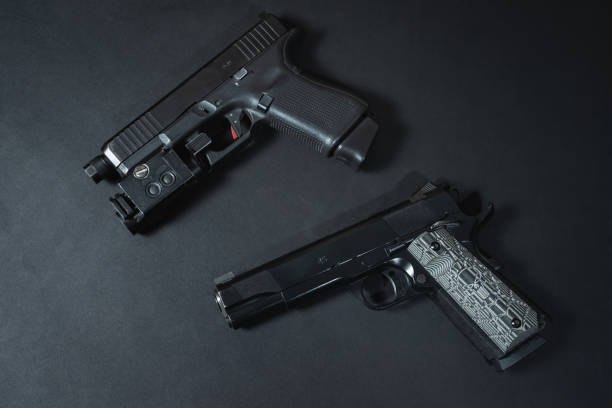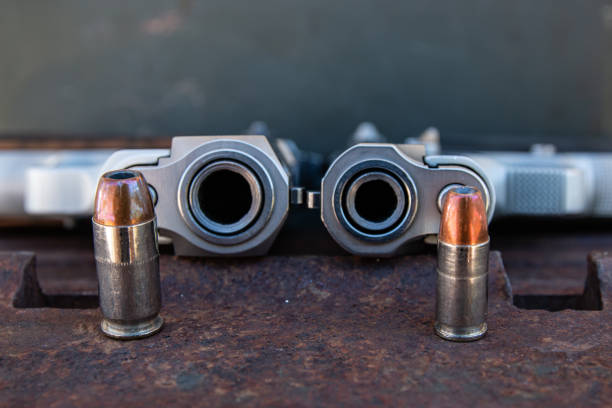In a world brimming with acronyms and abbreviations, ACP is a sequence of letters you’ve likely encountered across various fields and contexts. The question, “What Does ACP Stand For?” is more than a simple inquiry into three alphabetical characters; it’s an exploration into the diverse meanings and associations that ACP represents. This article is your definitive guide to uncovering the layers behind the acronym ACP.
Our expertise in demystifying acronyms is second to none, and it positions us to delve into the multiple industries and sectors where ACP holds significance. From the realms of medicine and technology to the corridors of political institutions and beyond, ACP carries weight and meaning that warrant a closer look.
We will navigate through the most common and impactful interpretations of ACP, shedding light on its usage in different scenarios. Whether it denotes a professional certification, a technical standard, a healthcare directive, or any other multitude of possibilities, the value of understanding ACP in its correct context cannot be overstated.
As we guide you through the intricacies of ACP, our content is designed not just to inform, but to engage and spark your curiosity. By the end of this article, you won’t just know what ACP stands for; you’ll appreciate the breadth of its applications and the importance of acronyms in conveying complex concepts efficiently.
Let’s embark on this journey of discovery together, and by its conclusion, you’ll be equipped with the knowledge to recognize and apply the term ACP in its appropriate contexts, enriching your understanding of the acronym and its place in our language and society.
Contents
John Moses Browning: The Innovator

John Browning was nothing short of a genius when it came to firearms design. He is rightfully considered one of the most influential inventors in the history of firearms technology.
Throughout his long and storied career, Browning designed a tremendous variety of groundbreaking guns. Just a few of his most famous and successful designs include:
- Rifles: The Winchester Model 1894 lever-action rifle, one of the most popular sporting rifles in history.
- Shotguns: The Remington Model 11 and subsequent Model 58 semi-auto shotguns, along with the famous Winchester Model 1897 pump-action shotgun.
- Machine Guns: The M1917 and M1919 machine guns, and especially the legendary M2 Browning .50 caliber heavy machine gun, which is still used by the U.S. military.
But perhaps Browning’s most notable innovation is the gas-operated automatic machine gun. Earlier rapid-firing guns like the Gatling Gun relied on crank power, while Hiram Maxim’s 1884 Maxim Gun used recoil operation.
Browning’s key observation was that diverting a small amount of propellant gas from a fired cartridge could provide the energy needed to cycle the action. This allowed the extremely high rates of continuous fire we associate with modern machine guns. The M2 “Ma Deuce” and other Browning designs still utilize this principle today.
The Meaning of ACP: Beyond the Colt 1911
While the Colt 1911 semi-automatic pistol chambered in .45 ACP is undoubtedly the most famous firearm bearing the “ACP” or “Automatic Colt Pistol” name, the designation refers more broadly to a series of cartridges designed by Browning for Colt.
Several other Colt semi-automatic pistols, mostly blowback operated pocket pistols, have been chambered for ACP cartridges:
- .25 ACP – Introduced in 1905 alongside the FN Model 1905 pistol, this tiny .25 caliber round was meant for close-range self defense.
- .32 ACP – Used in pistols like the Colt Model 1903 Pocket Hammerless, this mild .32 caliber load is suitable for concealed carry.
- .380 ACP – Also known as 9mm Browning Short, this popular caliber debuted in 1908 and splits the difference between .32 ACP and 9mm Luger.
- .38 ACP – This round appeared shortly after .45 ACP in 1907, but was soon eclipsed in popularity by .38 Special revolver cartridges.
- .45 ACP – The legendary big-bore cartridge specifically designed for Browning’s Colt Model 1911 semi-auto pistol.
The common thread between all these ACP loads is that they were designed by John Browning to be used in his Colt semi-automatic pistols, mostly intended for defensive, concealed carry purposes at the time. The cartridges span a useful range of calibers and power levels.
Technical details vary between loads, but in general ACP rounds utilize straight-walled rimless cases with rounded-nose FMJ or JHP bullets in the 185 to 230 grain range for .45 caliber, 80 to 100 grains for .380, and 60 to 90 grains for smaller .25 and .32 loads.
Velocities also range widely based on caliber and barrel length, but are generally subsonic, between 650 fps for .25 ACP up to 1,000 fps for hot .45 ACP loads. This balances stopping power and controllability for short range defense.
More watching video: History of .45ACP
The Colt 1911: A Legacy Forged in War
The most storied Browning/Colt semi-automatic pistol, and the one that truly popularized the .45 ACP cartridge, is undoubtedly the Colt Model 1911.
This iconic handgun was designed specifically in response to events during the Philippine-American War of 1899-1902. Early .38 caliber revolvers lacked enough stopping power against Moro juramentado warriors attacking American troops. The U.S. Army requested a sturdy .45 caliber semi-automatic to better meet the lethal threats of the day.
Browning’s solution, completed in 1911, was the eponymous Model 1911 chambered in his newly developed .45 ACP round. The combo of a reliable Browning short recoil tilting barrel system and big 230 grain bullets delivered on the Army’s request for more knockdown power accurately at short ranges.
This gave American soldiers in the Philippines, and later World War I, a formidable close quarters combat pistol. The .45 ACP round in particular developed a mythos of having unmatched “stopping power” or “manstopper” capabilities, though this has been debated.
The 1911 saw extensive military service for most of the 20th century. After initial adoption by the U.S. Army in 1911, it became iconic in World War I, World War II, Korea, and Vietnam. It was a prized sidearm for officers and machine gun crews.
Various other nations including Norway, Brazil, Mexico, and others also employed the 1911 as a military sidearm through the 1960s and 1970s.
But in 1985, after over 70 years of service, the M9 Beretta 9mm pistol began replacement of the 1911 as the U.S. military’s standard-issue sidearm. Higher ammo capacity of the 9mm was better suited for modern combat.
However, the 1911 had firmly cemented its place in weapons culture. It remains extraordinarily popular today on the civilian collector market as well as in competitive shooting sports.
Countless manufacturers produce new 1911 models and variants for commercial sale. The pistol’s distinctive profile is instantly recognizable in movies, games, and TV to this day.
More Than Just Firearms: Browning’s Lasting Influence
Though his ACP semi-automatic pistols and cartridges were a major contribution, Browning’s vision extended well beyond just handguns.
Throughout his life he patented dozens of innovative firearms designs in nearly every category. Just a few examples beyond those already mentioned:
- The Browning Hi-Power pistol, a high capacity 9mm handgun that served with many postwar militaries.
- The Colt Woodsman sporting pistol, one of the most popular .22 caliber plinking pistols in the world.
- The Browning Auto-5 and Remington Model 11 semi-auto shotguns, defining the form of repeating shotguns.
- The Browning Superposed over/under shotgun, noted for its refined dual-barrel design.
Browning’s inventions consistently defined and shaped firearms technology for sporting, military, and law enforcement use. Features and mechanisms he pioneered remain in use globally today. He essentially brought firearms design into the modern age through his innovative genius.
The Enduring Legacy of ACP Cartridges

While the Colt 1911 has been displaced from its military prominence, Browning’s ACP cartridge designscontinue to live on and thrive.
Despite misguided attempts to ban them, ACP rounds remain common and popular especially in the United States for:
- Self Defense – Compact .380 ACP pistols are widely used for concealed carry purposes. The .45 ACP maintains a devoted following among those preferring the “big bore” stopping power of a 230 grain bullet.
- Target Shooting – The milder recoiling .32 ACP and .38 ACP rounds are often chosen for recreational target practice and shooting sports, especially among newer shooters. Their manageable power makes them fun to plink steel targets with.
- Collecting – Vintage Colt and FN pistols in calibers like .25 ACP and .32 ACP are highly sought after by Browning collectors and firearms history enthusiasts.
Even in today’s world of polymer-framed pistols and “high-capacity” wonder nines, John Browning’s classic ACP cartridges continue to resonate strongly with shooters looking for timeless designs that are pleasurable to shoot and still suitable for self defense.
Conclusion
In the firearms world, John Moses Browning’s contributions and influence extended far beyond just the creation of ACP-designated semi-automatic pistols and ammunition.
Yet those handguns and cartridges do represent a core portion of his career and remain embedded in 20th century weapons culture.
More than a century later, Browning’s genius designs like the Colt 1911 and the .45 ACP live on both in collector value and practical use. His lasting impact on firearms technology is undeniable.

Trayce served as a grassroots leader and activist in Texas as President of Dallas and Texas Eagle Forum.
Trayce is Mom Caucus Member, Texas Conservative Mamas, Texas Conservative Grassroots Coalition Leader, and Grassroots America Champion of Freedom Honoree.
She currently serves as the Eagle Forum National Issues Chair on Human Trafficking.
Trayce received a Bachelor’s Degree in Marketing from Texas A&M
Currently, she homeschools her youngest child age 13 and graduated her six oldest children, ages 31 to 19.







